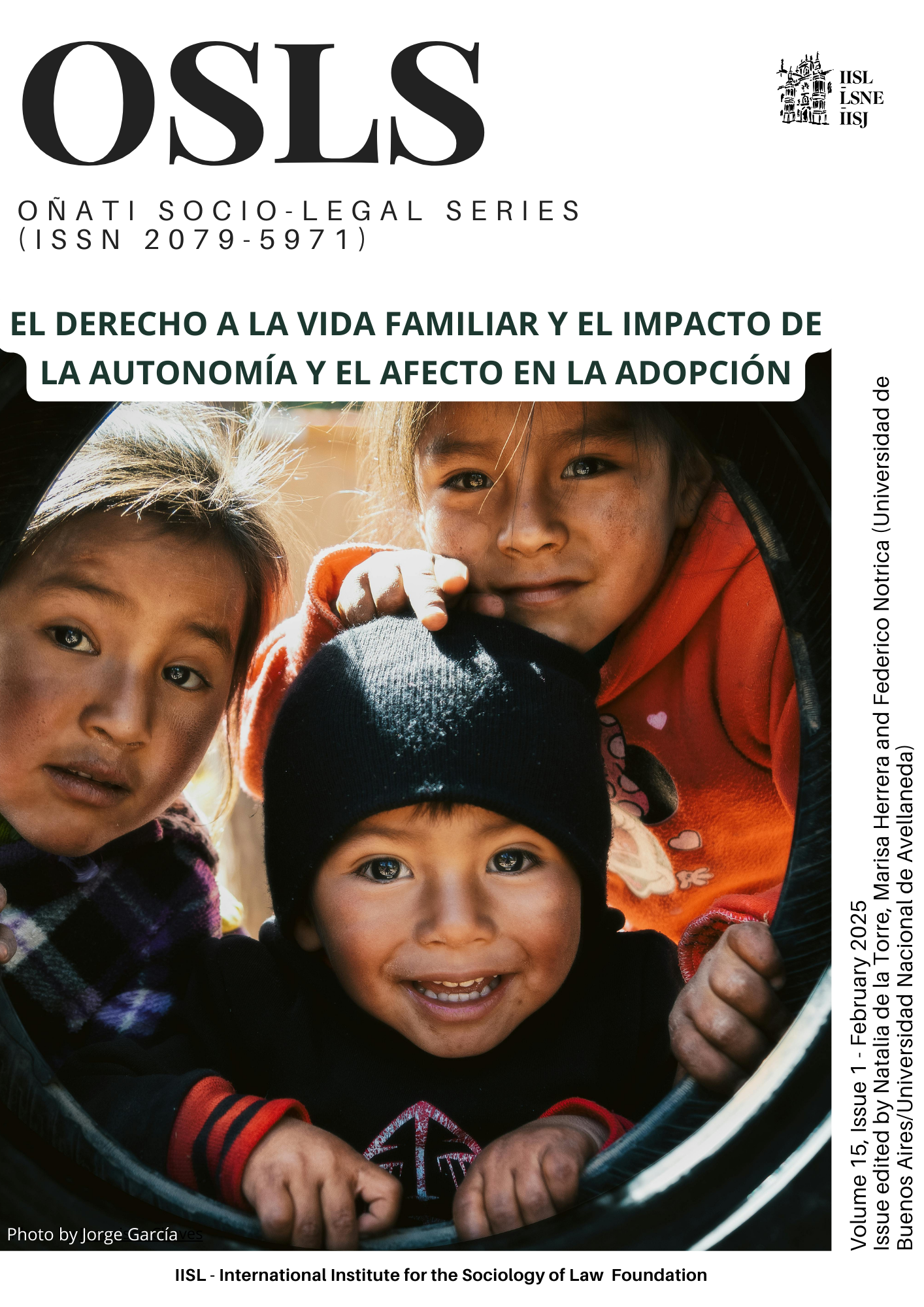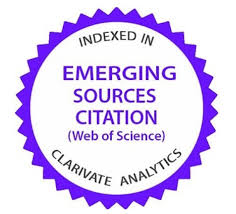Socio-affectiveness and alternative figures of care for girls, boys and adolescents in Argentine legal praxis
DOI:
https://doi.org/10.35295/osls.iisl.1944Keywords:
Socioaffectivity, judicial guard, delegation of the exercise of parental responsibility, guardianshipAbstract
Both the legislation and the doctrinal and jurisprudential creation have begun to recognize the notion of socio-affectivity as a structuring element of family relationships among its members, often granting it primacy over the biological bond or relationships derived from kinship. Although affection has always been a constitutive component of human relations, the classical approach refused and refuses to recognize in it a source of Law and, as such, share the halo of legitimacy that kinship ties have enjoyed since ancient times. This resistance was able to generate many problems in reality, since the lack of legal recognition in some of the figures ruins the advances in the field of human rights. A clear example in Argentine legislation turns out to be the contents of articles 611, 643 and 657 of the Civil and Commercial Code on the prohibition of de facto guardians except the kinship bond between parents and guardians; or the delegation of the exercise of parental responsibility and the granting of custody of a child or adolescent, limiting it only to a relative. Well, while this legal limit occurs, reality prevails and, in some cases, the affective bond overlaps the biological one, owing value to the guiding principle of the best interest of the child to solve the problem raised. From this, the present work will try to demonstrate, through the analysis of the jurisprudence, the solutions reached that combine said guiding principle with the notion of socio-affectivity.
Downloads
Metrics
Global Statistics ℹ️
|
538
Views
|
485
Downloads
|
|
1023
Total
|
|
References
Comisión 6, Familia, 2015. Conclusiones [en línea]. 25. Jornadas Nacionales de Derecho Civil, Bahía Blanca. Disponible en: https://jndcbahiablanca2015.com/wp-content/uploads/2015/10/CONCLUSIONES-06.pdf
Corte Interamericana de Derechos Humanos, 2017. Opinión Consultiva 24 [en línea]. Disponible en: https://corteidh.or.cr/docs/opiniones/seriea_24_esp.pdf
Fernández, S.E., González de Vicel, M., y Herrera, M., 2015. La identidad dinámica/socioafectiva como fuente generadora de conflictos no previstos en materia de adopción. Microjuris.com, MJ-DOC-7564-AR | MJD7564.
Fernández, S.E., y Herrera, M., 2018. Uno más uno, tres. La adopción como causa fuente de la pluriparentalidad. Derecho de Familia, 1851–1201.
Herrera, M., 2014. La noción de socioafectividad como elemento ‘rupturista’ del derecho de familia contemporáneo. Derecho de Familia, nº 66.
Herrera, M., 2021. Socioafectividad, infancias y adolescencias ¿De lo clásico a lo extravagante?. En: S.E. Fernández, ed., Tratado de Derechos de Niñas, Niños y Adolescentes. Buenos Aires: Abeledo Perrot, 445–487.
Krasnow, A., 2019. La socioafectividad en el Derecho de las familias argentino. Su despliegue en la filiación por técnicas de reproducción humana asistida. Rev. Derecho (Valdivia) [en línea], 32(1). Disponible en: http://dx.doi.org/10.4067/S0718-09502019000100071 DOI: https://doi.org/10.4067/S0718-09502019000100071
Krasnow, A.N., 2017. El despliegue de la socioafectividad en el derecho de las familias. Derecho de Familia [en línea], nº 81. Disponible en: http://hdl.handle.net/11336/75449
Mignon, M.B., y Pelegrina, U., 2018. La socioafectividad: sus implicancias en el terreno jurídico. Cuando la fuerza de los hechos y los afectos delimitan derechos. Derecho de Familia, nº 87, 259.
Murganti, A., 2016. El reconocimiento de la socioafectividad y el derecho a la vida familiar: un conflicto sobre sus contornos. Derecho de Familia, nº 3, 26–33.
Notrica, F., 2020. El ejercicio de la responsabilidad parental en las familias ensambladas. En: C. Grosman, ed., Responsabilidad Parental. Derecho y Realidad. Santa Fe: Rubinzal Culzoni, 289.
Notrica, F., et al., 2022. El impacto de la socioafectividad en la guarda judicial y en la delegación de la responsabilidad parental. Ponencia presentada en el marco de la comisión 7: Familia. “La socioafectividad y la incidencia en el interés superior de los niños, niñas y adolescentes” en las 28. Jornadas Nacional de Derecho Civil, Mendoza, Argentina.
Pérez Manrique, R.C., 2012. El afecto como elemento estructurante del derecho de familia. 17. Congreso Internacional de Derecho Familiar. Disertaciones y ponencias. Buenos Aires: La Ley, 189–190.
Pietra, M.L., 2020. Adopción y pluriparentalidad: ¿produce la socioafectividad efectos jurídicos? Revista Código Civil y Comercial, 6(4), 37–67.
Sánchez Correa, R., 2013. La protección de la familia en el espacio europeo. Estándares básicos. Proyecciones al ámbito interamericano. Revista Institucional de la Defensa Pública [en línea], 3(5), 61. Disponible en: https://corteidh.or.cr/tablas/r32827.pdf
Santolaya Machetti, P., 2004. El derecho a la vida familiar de los extranjeros. Valencia: Institut de Dret Public, 79.
Silva, S.A., y López, D., 2016. La identidad filiatoria en clave dinámica. A propósito de la noción de Socioafectividad. Revista Crítica de Derecho Privado, 13, 725–739.
Published
How to Cite
Issue
Section
License
Copyright (c) 2023 Federico Pablo Notrica

This work is licensed under a Creative Commons Attribution-NonCommercial-NoDerivatives 4.0 International License.
OSLS strictly respects intellectual property rights and it is our policy that the author retains copyright, and articles are made available under a Creative Commons licence. The Creative Commons Non-Commercial Attribution No-Derivatives licence is our default licence and it regulates how others can use your work. Further details available at https://creativecommons.org/licenses/by-nc-nd/4.0 If this is not acceptable to you, please contact us.
The non-exclusive permission you grant to us includes the rights to disseminate the bibliographic details of the article, including the abstract supplied by you, and to authorise others, including bibliographic databases, indexing and contents alerting services, to copy and communicate these details.
For information on how to share and store your own article at each stage of production from submission to final publication, please read our Self-Archiving and Sharing policy.
The Copyright Notice showing the author and co-authors, and the Creative Commons license will be displayed on the article, and you must agree to this as part of the submission process. Please ensure that all co-authors are properly attributed and that they understand and accept these terms.























